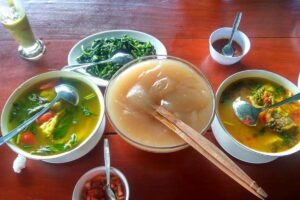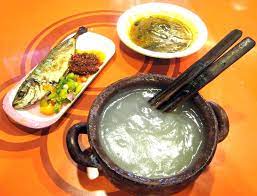Papeda is a traditional food made from sago. It looks like porridge, but the texture is thicker and stickier. This traditional food is often found in Papua, Maluku, and several areas in Sulawesi.

Historically, papeda is widely known in indigenous communities in Papua such as the Sentani and Arso tribes in Jayapura and the tribes in Manokwari, West Papua. For the people of Papua and Maluku, papeda is not just food. In fact, papeda is respected and sacred because it is often served in traditional ceremonies, because sago mythology is considered a story of human incarnation.

One of them, papeda is often served in the Watani Kame ceremony. The ceremony is held as a sign of the end of a person’s death cycle. This papeda food will be distributed to people who help with the ceremony. In addition to death, papeda is also an important dish in the birth ceremony of the first child in Inanwatan, South Sorong, West Papua. In this ceremony, papeda is usually served with pork. Still from Inanwatan, papeda is also often eaten by women as a pain reliever when making tattoos.

Seram, Maluku. Papeda, known as sonar monne, is a dish served in the pu-pu celebration ritual. Not only in Papua, papeda is also an important food in the life cycle of the Nuaulu tribe on Gadis Island. However, the Nuaulu and Huaulu tribes prohibit women who are menstruating from cooking papeda because it is considered taboo.

